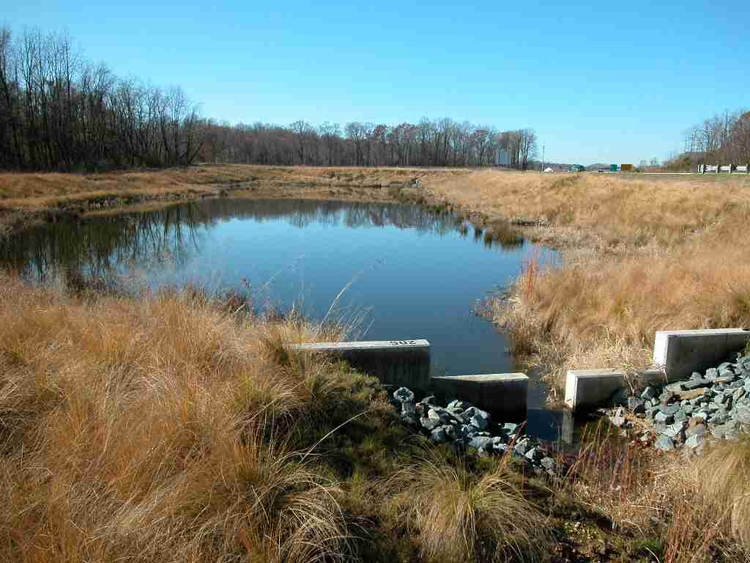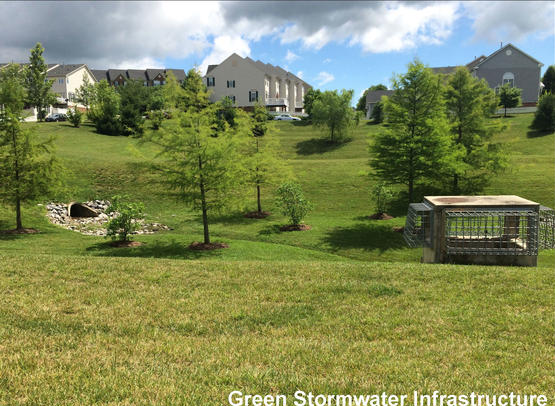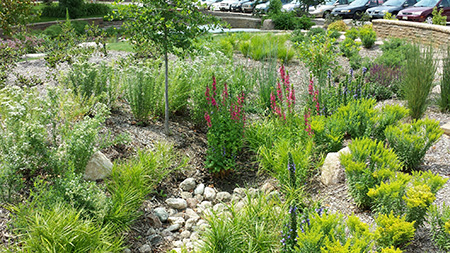
Facebook Twitter Instagram YouTube RSS Feed
Written on: May 27th, 2021 in Wetland Assessments
By Alison Rogerson, Wetland Monitoring and Assessment Program (WMAP)
In March we shared some results about the status of wetland acreage in Delaware between 2007 and 2017. This time we’re taking a closer look at the increasing number of stormwater ponds popping up across the state. Is this a good trend or something to be concerned about? How do ponds relate to wetland health?
You pass stormwater ponds every day. Along State Highway Route 1, next to the shopping center parking lot, or at the entrance of your neighborhood. Stormwater ponds are ubiquitous with development and we have a lot of development in Delaware.

In fact, between 2007 and 2017 Delaware experienced an increase of 1,260 acres of man-made retention or stormwater ponds around housing developments, ponds in industrial areas, or agricultural ponds. This represents 81% of all the acres of wetlands created, or gained, in this time period. The majority of open water gains occurred in Sussex County.
What is the issue with building more stormwater ponds and what does it have to do with wetlands? It just so happens that at the same time Delaware gained 1,260 acres of open water ponds, it lost 655 acres of freshwater wetlands, mostly forested, to development. In many cases, forested freshwater wetlands were lost to development and new developments require stormwater management, often as ponds.

Unfortunately, created ponds do not function the same way natural, forested wetlands do. Man-made open water ponds offer stormwater holding capacity, but don’t offer the same filtration and slow release into natural waterways that floodplain wetlands do. Stormwater ponds can be used by generalist wildlife species such as red-winged blackbirds or mallards, but do not offer the specialized habitat qualities that Delaware’s wetlands can provide. Created ponds offer little in the way of plant community, often cattails or the invasive Phragmites, whereas natural wetlands provide a rich array of beneficial plants.
I wish I could say this trend of increasing stormwater ponds and decreasing wetlands was just a recent occurrence, but similar changes were observed in previous decades as well. According to our previous statewide mapping update and analysis done for 1992-2007, gains in ponds exceeded gains of any other wetland type by 115%.
Do we need stormwater ponds? Yes. Especially as weather patterns become more extreme, bringing heavy rain events upon us in Delaware, we need infrastructure to quickly handle flash events and heavy stormwater loads. Stormwater management keeps our roads and neighborhoods from flooding, and can prevent backups that lead to polluted waters being released.
However, it is not appropriate to replace natural wetlands with stormwater ponds in the name of development. The trade-off in functions and natural services does not add up. In addition, stormwater infrastructure has been modernized to more naturally offer storage and filtration services that are visually appealing.
Green stormwater infrastructure features can be planted with native trees and shrubs and may sit dry until a storm event. These structures are still ready and waiting to hold and manage storm events, but allow the soil and plants to play a beneficial role. Bioretention gardens are smaller features that can be incorporated into landscaping that are enjoyable to look at.


For more information on Green Stormwater Infrastructure visit this USGS webpage.